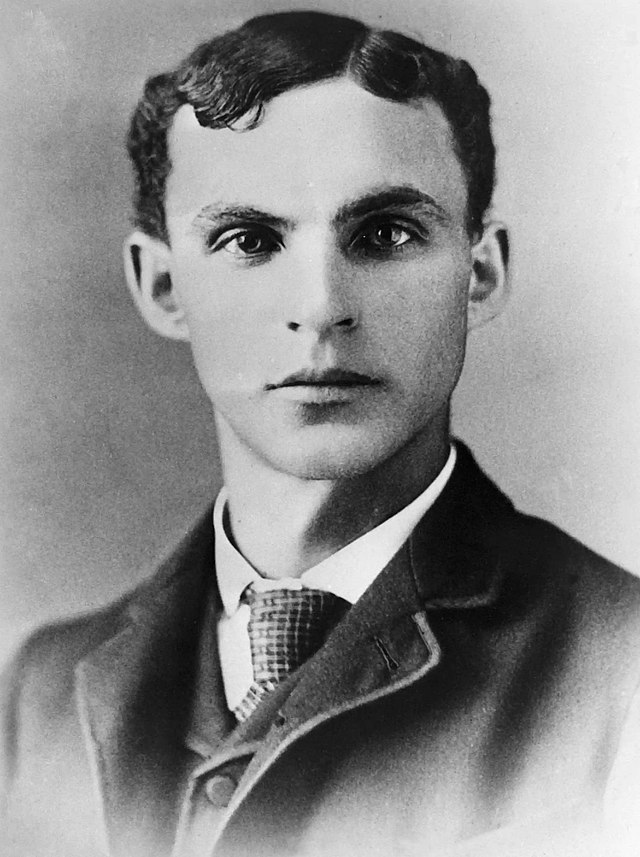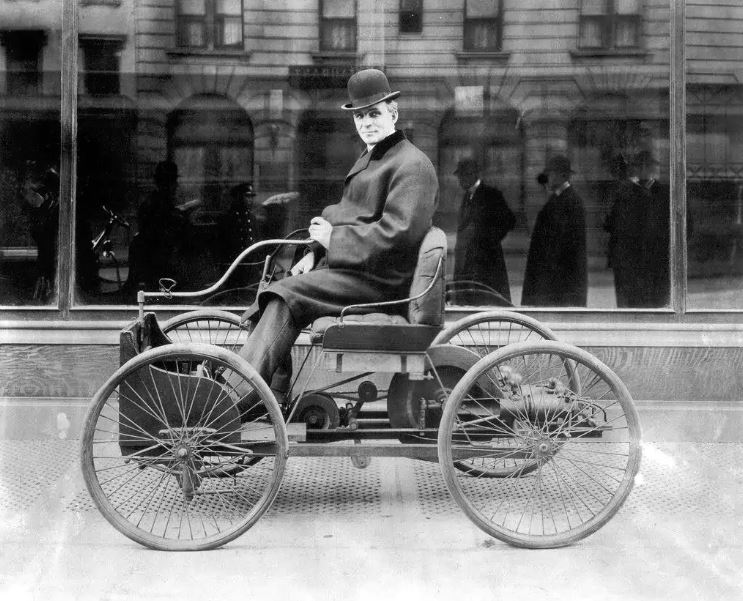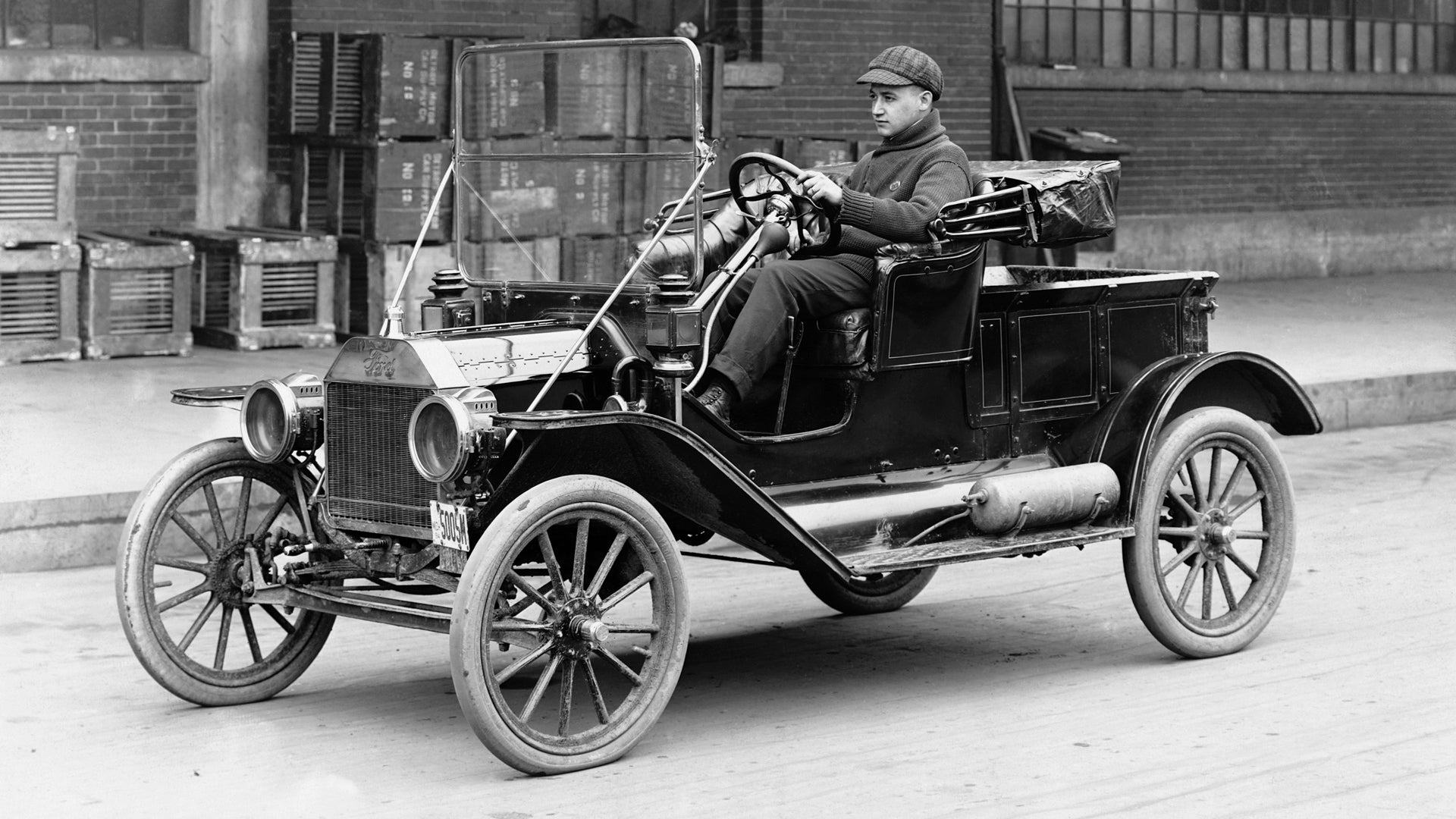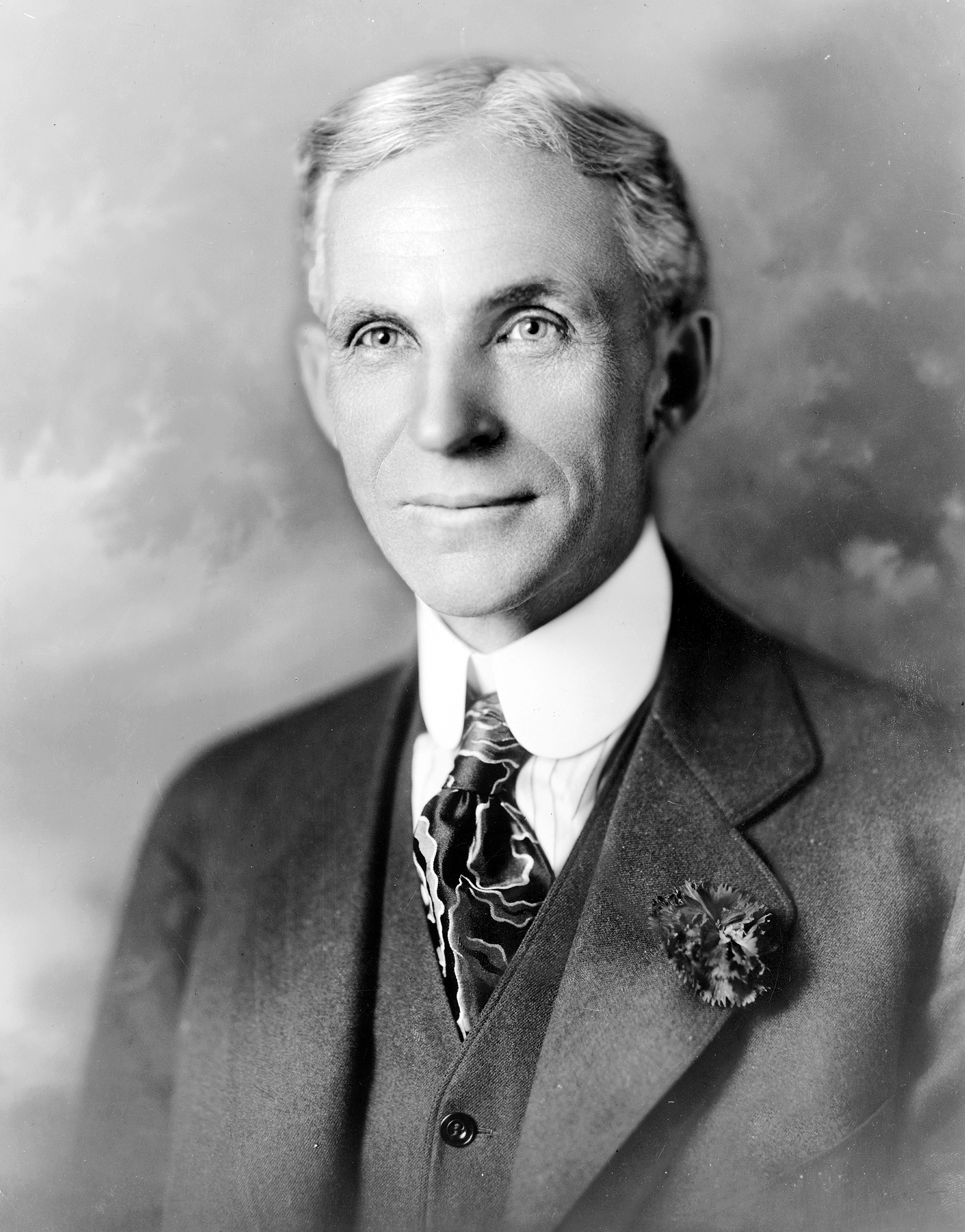Henry Ford
“Be ready to revise any system, scrap any method, abandon any theory, if the success of the job requires it.” – Henry Ford
Henry Ford was an American industrialist who revolutionized factory production through his creation of the assembly line. He was born on July 30, 1893 in Dearborn, Michigan as one of eight children to Irish immigrant farmers. He moved to Detroit in 1879 walking the entire way. While in Detroit, he learned about the internal-combustion engine and began tinkering with inventions using it.

Henry Ford in 1888
He married Clara Bryant in 1888 and the couple had one child, Edsel, born in in 1893. Ford became an engineer at the Detroit Edison Company and his responsibility was maintaining the city’s electric service 24 hours a day. He used his downtime at work to experiment and invent. He was determined to create a gasoline engine, and did so in 1893. In 1896 he completed his first horseless carriage, the “Quadricycle.”

Henry Ford on Quadcycle 1896
Ford was not the only person inventing vehicles at the time, and he was not the first. But he was obsessed with perfecting his creation, often at the exasperation of his investors, as he would not release something for sale until he felt it was perfect. By 1903, he felt he was ready and incorporated the Ford Motor Company. Uniquely, the company was backed by ordinary citizens as Ford had lost the support of his wealthy donors with his perfectionism. However, he did not have a license to manufacture from the Association of Licensed Automobile Manufacturers, who denied all licenses to new companies based on an 1895 patent to protect early investors. Ford sued and won an appeal in 1911.
The Model T debuted in 1908 and was sold as a car for ordinary Americans. Previously, vehicles had been seen as only for rich men. However, Ford was able to sell the car for a more modest amount due to his invention of the assembly line. Previously entire cars were made by one team who built cars one by one. Each mechanic would have the know how to build the entirety of a car from start to finish. Ford realized that by arranging workers in a factory line where each worker performed only one task or dealt with one product before passing the product onto the next person would cut costs and sped up production. His flooding of the market transformed the United States as everyday citizens were able to afford to travel. The Model T cost $950 in 1908, but only $290 by 1927. Ford also introduced a higher minimum wage and fewer work hours than his industry competitors to corner the market’s talent.

The Model T
Ford desperately wanted to expand, but his investors were against the aggressive plan. Therefore he bought out all of his stockholders in 1919 after losing a court battle to them. This made him the largest single owner of a company. His behavior became more erratic and he was determined to keep absolute control. He expanded to a plant in River Rouge, determined to own all aspects of assembly from raw materials to final transport. This massive expansion also led to his decline, as Ford refused to add other inventor’s innovations to his cars, such as gearshifts or hydraulic breaks. His absolute ownership also led to a declining workforce as his control stifled wages and dissent, and while he once led the industry in benefits, he fell behind. He finally left the company in 1945, transferring ownership to his grandson.
Henry Ford died in 1947. His shares of Ford stock went to the Ford Foundation which became the richest private foundation in the world at the time.

Henry Ford in 1919